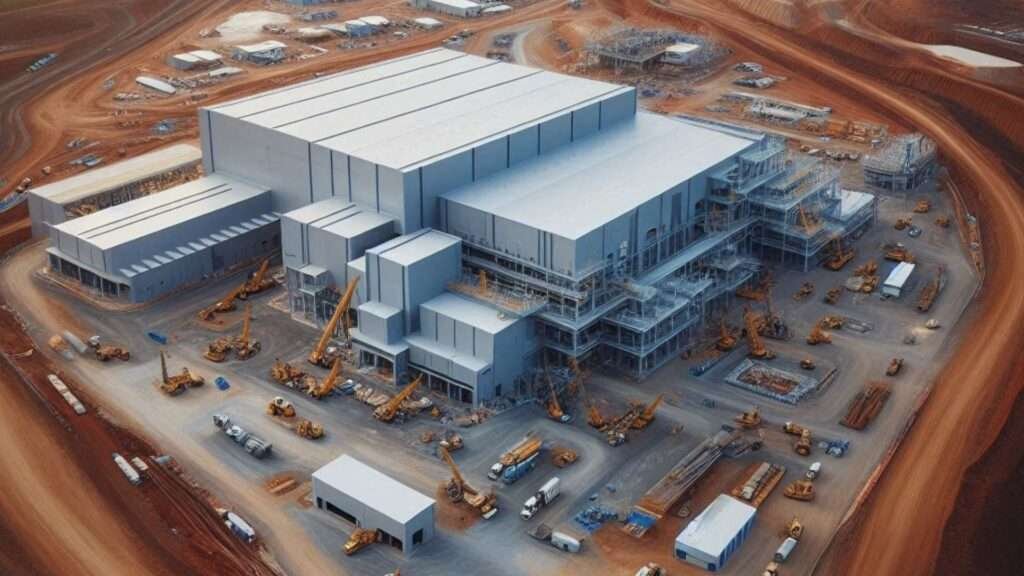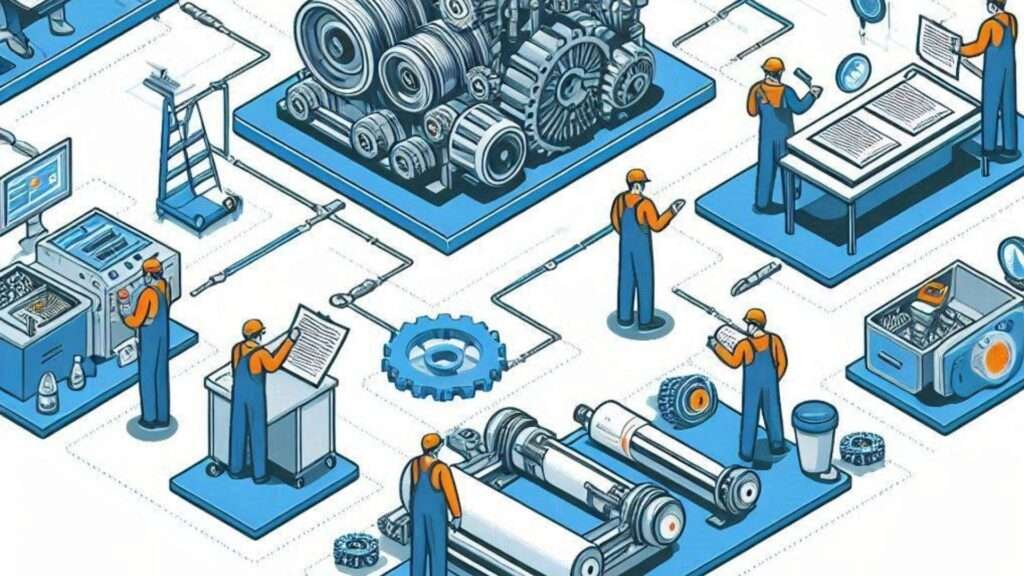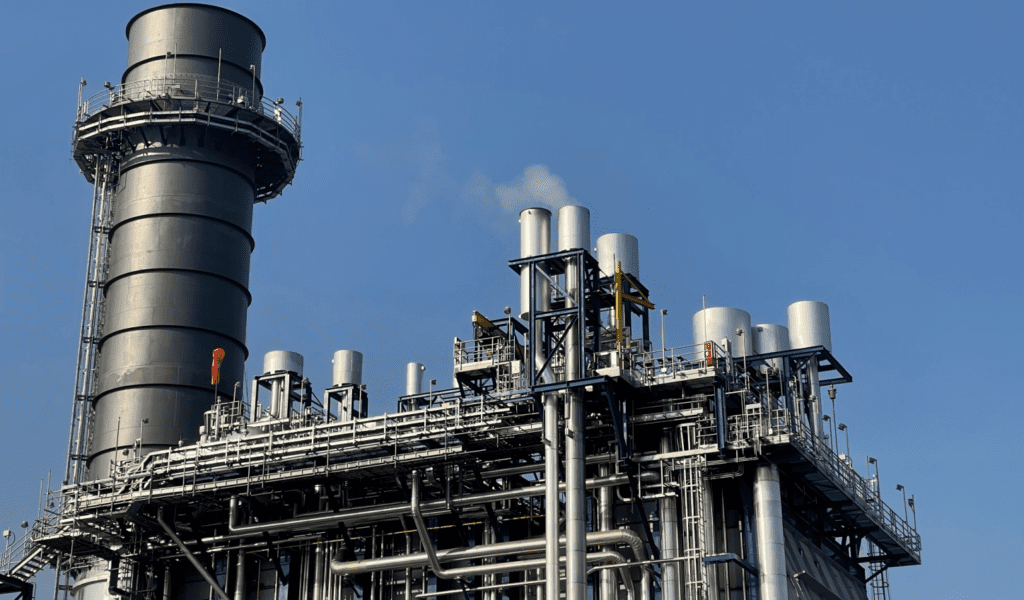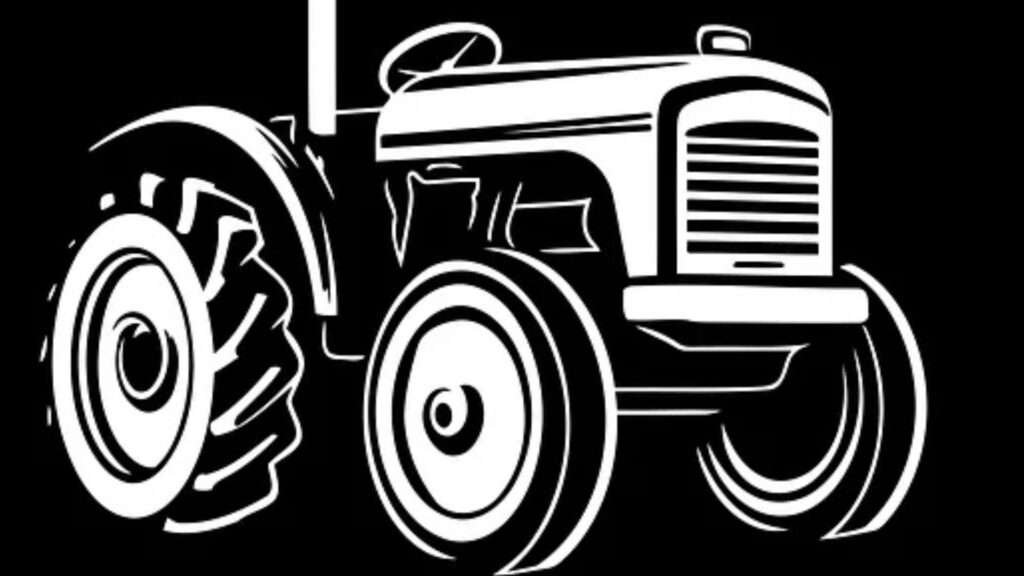Setting Up Maintenance & Operations Systems At A New Facility.
With this article I have put together a comprehensive
framework for setting up maintenance and operations systems at a new facility.
It covers a wide range of critical areas, including baseline
analysis, maintenance team readiness, production process analysis, performance
reporting, data collection methods, technology integration, cost of quality
management, and long-term goal setting.
The framework emphasizes the importance of a holistic approach
to maintenance and operations, integrating various aspects such as preventive
and predictive maintenance, employee training, safety assurance, inventory
optimization, and cross-functional collaboration.
It also highlights the crucial role of technology in modern
maintenance systems, discussing the integration of industrial control systems
with CMMS, EAM, and ERP solutions.
Table Of
Contents:
1.0 Conduct A
Baseline Analysis:
1.1 Key Steps
2.0Maintenance Team Readiness:
2.1 Preventive Maintenance.
2.2Predictive Analysis.
2.3Performance Measurement and
Efficiency.
2.4Employee Training &
Development.
2.5Procedure Development &
Management.
2.6Safety Assurance & Compliance.
2.7Maintenance Equipment & Tools
Management.
2.8Spare Parts Inventory
Optimisation.
2.9Energy Efficiency and
Sustainability.
2.10
Cross Function Collaboration.
2.11
Conduct Individual Equipment Analysis.
3.0Conduct A Production Process
Analysis:
4.0Setting Up Performance Reporting:
5.0Define Core
Data Collection Methods:
6.0Operations Technology and
Integration:
7.0Maintenance Technology and
Integration:
8.0Cost Of Quality Management:
9.0Priorities and Long Term Goals:
10.0
Conclusion & 10 Key Takeaways:
1.0
Conduct A
Baseline Analysis:
Quality and effective maintenance is crucial for operational
success and minimizing costly downtime.
Conducting a baseline analysis is the foundational step in
establishing a robust maintenance quality framework for a new facility.
This analysis provides a comprehensive understanding of
current maintenance operations and sets the stage for future improvements.
The primary goal of a baseline analysis is to gather essential
data on the maintenance department’s readiness to effectively support
production goals.
This allows the company to identify strengths and weaknesses
and make necessary adjustments.
The process begins with collecting initial data related to key
aspects such as equipment performance, maintenance processes, materials
management, and planned expenses.
Establishing this clear starting point is vital for effective
planning and evaluation of improvements.
1.1
Key Steps
in Conducting a Baseline Analysis:
a)
Setup performance metrics for all production equipment,
including:
b)
Overall Equipment Effectiveness (OEE): Combines
availability, performance, and quality to measure total production efficiency.
c)
Capacity utilization: The percentage of total
production capacity being used.
d)
Cycle time: The time taken to complete one full
production cycle.
e)
Yield: The percentage of good output compared to
total input.
f)
Defect rate: The number of defective units
produced per total units.
g)
Inventory turnover: How quickly raw materials and
finished goods move through the production process.
h)
On-time delivery rate: The percentage of orders
delivered on or before the promised date.
i)
Changeover time: Time required to switch
production from one product to another.
j)
Labor productivity: Output produced per labor
hour.
k)
Safety incidents: Number of accidents or
near-misses per period of time.
2.0
Maintenance
Team Readiness Analysis:
Setting up a maintenance quality equation at a new company
involves evaluating the readiness of the maintenance department to perform all
types of maintenance (preventive, predictive, reactive).
This evaluation extends to employee training status, work
procedure development status, safety assurance requirements, and the
availability of equipment and tools.
Below is a detailed breakdown of the key components and
considerations:
2.1
Preventive
Maintenance (PM):
Preventive Maintenance strategies, which include non-intrusive
inspections and servicing designed to prevent equipment failures, have been
developed within the CMMS/AMS/ERP.
These strategies are set up for automated scheduling and
encompass identified parts replacements along with approved work procedures.
2.2
Predictive
Maintenance (PdM):
Research and select appropriate predictive maintenance
technologies.
Integrate predictive maintenance data with the CMMS for
improved decision-making.
Ensure the reliability engineering team is set up and trained
in the use of all condition monitoring equipment and is well prepared for using
data and analytics to predict equipment failures before they occur.
a)
Team Structure: The reliability engineering team has been
established with clearly defined roles and responsibilities, ensuring
comprehensive coverage of all PdM activities.
b)
Equipment Proficiency: Team
members are thoroughly trained in operating and interpreting data from various
condition monitoring tools, such as:
a.
Vibration analyzers.
b.
Infrared thermography cameras.
c.
Ultrasonic detectors.
d.
Oil analysis equipment.
e.
Motor circuit analyzers.
c)
Data Collection and Management: The
team has implemented robust systems for collecting, storing, and organizing
equipment performance data, creating a foundation for effective analysis.
d)
Analytical Skills:
Engineers have been trained in advanced data analysis techniques, including:
a.
Trend analysis
b.
Statistical process control
c.
Machine learning algorithms for failure prediction
e)
Software Utilization: The
team is proficient in using specialized PdM software for data integration,
visualization, and predictive modeling.
f)
Cross-functional Collaboration:
Processes are in place for the reliability team to effectively communicate
findings and recommendations to maintenance and operations departments.
g)
Continuous Improvement: The
team has established protocols for regularly reviewing and refining their
predictive models and techniques based on real-world outcomes.
h)
ROI Tracking: Methods
have been implemented to measure and report on the financial impact of the PdM
program, including reduced downtime and maintenance costs.
i)
Industry Standards Compliance: The
team’s practices align with relevant industry standards and best practices for
predictive maintenance.
j)
Scalability: The current setup allows
for easy expansion of the PdM program to cover additional equipment or
incorporate new technologies as needed.
This comprehensive readiness ensures that the reliability
engineering team is well-positioned to leverage predictive maintenance
strategies, significantly enhancing equipment reliability and operational
efficiency.
2.3 Performance Measurement and
Efficiency:
a)
Implement systems to measure reactive maintenance
efficiency and promptness.
b)
Track instances of unplanned maintenance occurring
shortly after preventive servicing (maintenance strategy ineffectiveness).
c)
Track costs and production disruptions associated
with equipment breakdowns.
d)
Establish key performance indicators (KPIs) for all
maintenance activities and regularly review and analyze performance data to
identify trends and areas for improvement
2.4 Employee Training and Development:
2.4.1
Create a comprehensive training status monitoring
system.
2.4.2
Track skills expiry dates and renewal requirements.
2.4.3
Maintain up-to-date records of employee
certifications.
2.4.4
Establish robust employee development training
programs.
2.4.5
Design equipment-specific training modules.
2.4.6
Develop safety protocol training sessions.
2.4.7
Implement certification programs aligned with
industry standards.
2.4.8
Set up initial certification processes.
2.4.9
Schedule regular re-certification to ensure skills
remain current.
2.4.10
Create a mentorship program for knowledge transfer
between experienced and new staff.
2.4.11 Conduct A Maintenance Skills
Analysis:
a)
A comprehensive skills analysis is a fundamental
step in establishing an effective Maintenance Quality Framework at a new
company.
b)
This process identifies both technical and soft
skills, uncovering gaps and training needs within the maintenance team.
Technical Skills Assessment:
a) Core Areas:
·
Machinery maintenance.
·
Troubleshooting techniques.
·
Equipment handling procedures.
b) Technological Proficiency:
·
Knowledge of latest advancements in maintenance
technology.
·
Proficiency in predictive maintenance techniques.
·
Competence in using diagnostic tools.
c) Company-Specific Skills:
·
Understanding of unique operational complexities.
·
Familiarity with company-specific machinery and
processes.
Employee Soft Skills/Personal
Attributes Evaluation:
a) Critical Competencies:
·
Problem-solving abilities.
·
Communication skills (verbal and written).
·
Teamwork and collaboration.
b) Importance of Soft Skills:
·
Facilitates seamless coordination during complex
tasks.
·
Ensures clear understanding and execution of
instructions.
·
Enables quick and efficient issue resolution.
·
Minimizes downtime and operational disruptions.
Analysis Methodology:
a) Assessment Tools:
·
Skill matrices.
·
Performance evaluations.
·
Practical demonstrations.
·
Written or online tests.
b) 360-degree Feedback:
·
Self-assessment.
·
Peer reviews.
·
Supervisor evaluations.
Training Program Development:
a) Gap Analysis:
·
Identify discrepancies between current and
required skill levels.
·
Prioritize areas for improvement.
b) Tailored Training Initiatives:
·
Technical workshops for specific machinery or
processes.
·
Soft skills development courses (e.g.,
communication, leadership).
·
Team-building exercises.
c) External Training and
Certifications:
·
Identify areas requiring specialized external
training.
·
Explore partnerships with technical institutes or
industry-certified providers.
·
Encourage relevant professional certifications.
Continuous Learning Culture:
a) Regular Skill Audits:
·
Conduct periodic reassessments to track progress.
·
Identify emerging skill gaps due to technological
advancements.
b) Knowledge Sharing:
·
Implement mentoring programs.
·
Encourage cross-training among team members.
c) Career Development:
·
Create individual development plans.
·
Provide opportunities for career advancement based
on skill acquisition.
Technology Integration in Skills
Development:
a) E-learning Platforms:
·
Implement online training modules for flexible
learning.
·
Utilize virtual reality (VR) for simulated
maintenance scenarios.
b) Skills Tracking Software:
·
Use digital tools to monitor and manage team
competencies.
·
Generate reports to identify trends and areas for
improvement.
Key Takeaways:
1.
A thorough skills analysis forms the foundation of
an effective maintenance team.
2.
By identifying and addressing both technical and
soft skill gaps, companies can develop a workforce that is not only technically
proficient but also adaptable and collaborative.
3.
This approach ensures that the maintenance team
can effectively meet the company’s objectives, minimize downtime, and
contribute to overall operational excellence.
2.5 Procedure Development and Management:
a)
Monitor and report on the status of task-specific
work procedure development.
b)
Create and approve Standard Operating Procedures
(SOPs) for all maintenance activities.
c)
Ensure SOPs are clear, concise, and easily
accessible to all maintenance staff.
d)
Regularly review and update procedures based on
feedback and the latest best practice data.
e)
Establish a continuous improvement process for
procedures, encourage staff to suggest improvements and innovations and
implement approved changes to improve overall procedure efficiency and
effectiveness.
2.6 Safety Assurance and Compliance:
a)
Establish comprehensive safety requirements.
b)
Conduct regular safety training sessions.
c)
Cover hazard identification, risk assessment, and
emergency response.
d)
Ensure compliance with industry and regulatory
safety standards.
e)
Perform periodic safety audits to identify and
mitigate potential hazards and use audit findings to improve safety protocols
and training programs.
f)
Develop a near-miss reporting system to
proactively address potential safety issues.
2.7 Maintenance Equipment and Tools
Management:
a.
Provision and then maintain an up-to-date
inventory of all maintenance department equipment and tools.
b.
Ensure availability of spare parts for critical
special tools and maintenance servicing equipment.
c.
Schedule regular calibration and maintain records
of calibration dates and results for tools such as:
·
Torque wrenches and torque screwdrivers.
·
Pressure gauges and calibrators.
·
Multimeters and other electrical testing equipment.
·
Thermometers and temperature probes.
·
Vibration & Acoustic analyzers.
·
Ultrasonic thickness gauges.
·
Laser alignment tools.
·
Precision calipers and micrometers.
·
Dial indicators.
·
Infrared thermography cameras.
·
Hardness testers.
·
Force gauges.
·
Dynamometers.
·
pH meters.
·
Scales and balances.
·
Gas detectors and analyzers.
·
Oil analysis equipment.
d.
Track servicing equipment & special tool usage
and maintenance history.
e.
Develop a system for tool check-out and return to
minimize loss and ensure availability.
2.8 Spare Parts Inventory
Optimization:
a)
Conduct criticality analysis (business impact) of the
warehouse inventory.
b)
Implement a just-in-time inventory system for
non-critical parts.
c)
Establish relationships with key suppliers for
rapid parts delivery.
d)
Consider Warehouse Inventory Optimisation Software:
Netstock is a powerful inventory optimisation software that
can significantly improve supply chain management.
It offers advanced inventory classification and segmentation
features that can be applied to spare parts inventory.
This software uses AI to analyze historical data and classify
items based on factors like sales value, velocity, and criticality and this allows
you to:
·
Automatically categorize spare parts based on
their importance to equipment functionality
·
Prioritize stocking levels for critical parts to
minimize downtime
·
Adjust safety stock levels and reorder points
based on part criticality
o
Implementing a just-in-time inventory system for
non-critical parts:
Netstock’s precision forecasting and demand planning
capabilities are well-suited for implementing just-in-time inventory for
non-critical parts.
·
Generates accurate forecasts using machine
learning, considering factors like seasonality and trends
·
Provides real-time visibility into inventory
levels across multiple locations
·
Automates purchase orders based on predefined
thresholds, ensuring you order only what’s needed, when it’s needed
·
Optimizes order quantities to balance inventory
holding costs with ordering costs
o
Establishing relationships with key suppliers for
rapid parts delivery:
Netstock includes very strong supplier management features
that can help strengthen relationships with key suppliers:
·
Centralizes supplier information and performance
metrics
·
Tracks supplier lead times and delivery
reliability
·
Automatically adjusts safety stock levels based on
supplier performance
·
Facilitates electronic collaboration with
suppliers
·
Provides data-driven insights to negotiate better
terms with suppliers
·
Key features of Netstock that support these
functions include:
·
Real-time inventory tracking: Provides a
comprehensive view of stock levels across all locations.
·
Advanced analytics and reporting: Offers insights
into inventory KPIs, stock-outs, and excess stock.
·
Automated purchase orders: Generates optimized
orders based on inventory policies and forecasts.
·
Multi-location optimization: Analyzes inventory
across locations and recommends stock transfers.
·
Supplier performance monitoring: Tracks supplier
metrics and factors them into inventory decisions.
·
Inventory policy modeling: Allows you to model
different scenarios and their impact on inventory levels and costs.
·
Integration with ERP/EAM/CMMS: Seamlessly connects
with popular ERP/EAM/CMMS solutions for real-time data exchange.
·
Cloud-based solution: Offers accessibility and
scalability without the need for extensive IT infrastructure.
Netstock’s AI-powered approach to inventory optimization can
help businesses reduce excess stock, minimize stock-outs, and improve cash
flow.
By providing actionable insights and automating many aspects
of inventory management, it enables companies to make data-driven decisions and
respond quickly to changes in demand or supply.
2.9 Energy Efficiency and
Sustainability:
a)
Conduct energy audits of maintenance operations
and equipment.
b)
Implement energy-saving measures in maintenance
procedures.
c)
Explore opportunities for recycling and waste
reduction in maintenance activities.
2.10 Cross-functional Collaboration:
a)
Establish regular meetings with production,
quality, engineering & materials management teams.
b)
Develop a system for sharing maintenance insights
with other departments.
c)
Collaborate on equipment design improvements based
on maintenance data and technology innovations.
2.11
Conduct
Individual Equipment Analysis:
Establishing a robust maintenance quality framework requires a
comprehensive individual equipment analysis.
This process is crucial for understanding each significant
piece of equipment’s current condition, performance data, specific maintenance
requirements, and criticality to the overall production process.
2.11.1
Initial
Assessment:
The analysis begins with a thorough evaluation of each piece
of equipment:
a) Perform visual inspections for signs of wear and tear.
b) Utilize diagnostic tools to detect underlying issues.
c) Review performance records to identify recurring problems
and repair history.
d) Analyze patterns that could signal latent defects or
potential future failures.
2.11.2
Maintenance
Requirements:
Conduct a meticulous review of each piece of equipment to
determine its specific maintenance needs:
a) Examine manufacturer recommendations for:
·
Routine service intervals
·
Key components requiring regular attention
·
Special operational conditions
b) Integrate industry best practices:
·
Incorporate sector-specific experience and proven
methodologies
·
Adopt cutting-edge techniques and innovations
c) Develop custom protocols when necessary:
·
Address unique operational conditions
·
Align with specific organizational goals
·
Implement advanced diagnostic tools
·
Provide specialized training for maintenance
personnel
·
Develop bespoke spare parts management strategies
2.11.3 Comprehensive Maintenance Task
Lists:
Create detailed preventive, predictive, and corrective
maintenance task lists or standard jobs:
a) Specify the scope of work
b) Include work estimates (costs and timelines)
c) Identify required skills and expertise
d) List necessary tools and parts
2.11.4
Criticality
Analysis:
a) Identify all assets within the facility
b) Gather asset-specific data (manufacturer, model number,
operating parameters, etc.)
c) Develop criteria for assessing criticality (failure
frequency, repair costs, safety impact, etc.)
d) Score assets against the criteria
e) Prioritize and rank assets based on their scores
f) Implement tailored maintenance and operating strategies for
high-priority equipment
2.11.5 The Benefits Of Individual
Equipment Analysis:
a)
Efficient resource allocation
b)
Minimized downtime
c)
Enhanced reliability of the production process
d)
Reduced maintenance costs
e)
Improved operational effectiveness and
sustainability
f)
Extended equipment lifespan
g)
Reduced likelihood of unexpected failures
h)
Safer working environment
2.12
Technology
Integration:
Leverage modern technologies to enhance equipment analysis and
maintenance:
a) Implement advanced sensors for real-time monitoring
b) Utilize data analytics and machine learning for predictive
maintenance
c) Adopt computerized maintenance management systems (CMMS)
d) Consider augmented reality (AR) tools for maintenance
guidance
2.13
Continuous
Improvement:
Establish a process for ongoing refinement of the equipment
analysis and maintenance strategy:
a) Regularly review and update equipment criticality
assessments
b) Analyze maintenance data to identify trends and improvement
opportunities
c) Encourage feedback from operators and maintenance staff
d) Stay informed about technological advancements and industry
best practices
e) Conduct periodic audits of the maintenance program
3.0
Conduct A
Production Process Analysis:
Following the baseline analysis, an in-depth examination of
the production process is essential to gain comprehensive insights into the
factors influencing maintenance quality.
This analysis is pivotal in identifying potential bottlenecks,
inefficiencies, and areas where targeted maintenance interventions can have the
greatest impact.
By closely scrutinizing the production process, a company can
uncover hidden problems that, once addressed, can lead to significant
improvements in efficiency and output.
3.1
Objectives
of Production Process Analysis:
One of the primary objectives of this analysis is to
understand how maintenance directly affects production capacity and output.
A well-maintained production system can operate at optimal
efficiency, minimizing downtime and reducing unexpected breakdowns that disrupt
workflow.
Aligning maintenance goals with broader business objectives
ensures that maintenance activities are not just reactive but also
strategically planned to support overall productivity and profitability.
3.2
Interconnected
Stages of Production:
The production process analysis should consider the intricate
interplay between various stages of production.
Each stage is interconnected, and inefficiencies in one stage
can have a cascading effect on subsequent stages, leading to compounded issues
downstream.
For instance, if a critical piece of equipment in one stage is
prone to frequent failures due to inadequate maintenance, it can cause delays
and lower the overall output quality.
Understanding these interactions helps in developing a
holistic maintenance strategy that addresses issues at their root and prevents
them from escalating.
3.3
Cross-Functional
Collaboration:
Additionally, the analysis should involve cross-functional
collaboration with stakeholders from different departments, including
engineering, operations, and quality control.
Their inputs can provide valuable perspectives on how
maintenance practices influence production outcomes.
Utilizing data and metrics from the production process, such
as equipment downtime, throughput rates, and defect rates, can further inform
maintenance priorities and resource allocation.
Key Takeaways:
1.
A thorough production process analysis is
instrumental in establishing a robust maintenance quality equation.
2.
By identifying key areas for maintenance
intervention and understanding the impact on production capacity, businesses
can create a sustainable maintenance strategy that enhances operational
efficiency and supports long-term success.
4.0
Setting
Up Performance Reporting:
Establishing a robust performance reporting system is a
critical component in maintaining the quality equation within any new company.
Performance reporting serves as the bedrock of tracking
progress, pinpointing areas for improvement, and validating the efficacy of
maintenance strategies.
To implement an effective system, the initial step involves
defining clear and comprehensive key performance indicators (KPIs).
These KPIs should encompass various facets such as:
a)
Equipment uptime.
b)
Maintenance efficiency.
c)
Cost savings.
d)
Quality of repairs.
e)
Overall Equipment Effectiveness (OEE).
f)
Planned Maintenance Percentage (PMP).
g)
Breakdown/Emergency Maintenance Percentage (EMP).
h)
Mean Time to Repair (MTTR).
i)
Mean Time Between Failures (MTBF).
j)
Mean Time to Failure (MTTF).
k)
Maintenance Backlog.
Equipment uptime is a fundamental KPI, indicating the
operational readiness and reliability of machinery. A high uptime percentage
signifies fewer disruptions, translating directly into productivity gains.
Maintenance efficiency measures the timeliness and quality of
maintenance activities conducted. OEE provides a comprehensive view of
equipment performance by combining availability, performance, and quality
metrics.
Cost savings evaluates the financial impact of maintenance
activities, involving analysis of expenditure trends and identifying
cost-reduction opportunities through preventive strategies and efficient
resource management. The quality of repairs, often gauged by post-maintenance
inspection results, ensures that corrective measures are effective and durable,
minimizing the likelihood of recurring issues.
A reliable performance reporting system should facilitate
regular, detailed reporting at various frequencies – daily, weekly, monthly,
and quarterly – depending on the KPI and stakeholder needs.
It should be accessible to all relevant stakeholders, ensuring
transparency from top management to on-ground maintenance teams.
Implementing data visualization tools like dashboards, charts,
and graphs is crucial for easy interpretation of KPIs. The system should also
incorporate benchmarking practices, comparing KPIs against industry standards
or historical performance. Additionally, integrating predictive analytics can
help forecast potential issues based on performance data.
By integrating these components into a cohesive performance
reporting system, organizations can demonstrate the tangible value of their
maintenance departments, fostering an environment of continuous improvement and
reinforcing the strategic importance of maintenance activities in achieving
organizational objectives.
5.0
Define
Core Data Collection Methods:
Defining core data collection methods in a new company is
pivotal for the establishment of a robust maintenance quality equation.
The primary goal is to identify the types of maintenance &
production data necessary for informed decision-making and continuous
improvement.
These data types typically include:
a)
Work orders/Equipment history
b)
Failure analysis
c)
Asset information
d)
Maintenance schedules
e)
Spare parts inventory
f)
Key equipment operating data (this is a mix for
fixed/mobile plant):
a.
Running hours
b.
Fuel consumption
c.
GPS location data
d.
Speed and distance traveled
e.
Payload data (for hauling equipment)
f.
Tyre pressure and wear
g.
Running hours
h.
Power usage
i.
Operating temperature
j.
Flow rates and pressures
k.
Vibration levels
l.
Production output
m.
Energy consumption (overall and per unit).
n.
Environmental conditions (ambient temperature,
humidity, dust levels).
It is crucial to outline the method by which each type of data
will be gathered to ensure the overall efficacy and reliability of the data
collected. Gathering data can be approached through various means:
a)
Manual entry: While traditional, it may suffice
for less complex systems but often carries the risk of human error.
b)
Automated systems: These offer the benefits of
accuracy and efficiency, including sensors and monitoring tools that
continuously collect data without human intervention.
c)
Hybrid approach: Combining both manual and
automated methods could provide a balanced solution, capitalizing on the
strengths of each method.
6.0
Operations
Technology & Integration:
Technology and Inter Solution Integration is a significant
undertaking at a new Facility and inovles:
6.1
Industrial
Control Systems: Citec SCADA, and Yokogawa DCS are industrial
control systems used in various automation and control applications
6.1.1
Citec
(Citect SCADA): Now part of Schneider Electric’s portfolio, is a
specific SCADA software solution that can scale from single standalone
workstations to plant-wide installations.
6.1.2
It offers high levels of redundancy and
availability, making it suitable for both small and large-scale applications.
6.1.3
Key features include:
·
Scalability: Can grow with the system by
incrementing licenses as needed.
·
Integration: Can integrate with various
controllers and devices, providing flexibility in system design.
6.2
Yokogawa
DCS (Distributed Control System): This solution is designed for
complex, large-scale industrial processes such as those found in refineries and
chemical plants.
6.2.1
DCS is characterized by its high reliability,
redundancy, and integration of control and monitoring functions.
6.2.2
Key features include:
· Distributed
Architecture: Uses multiple workstations and controllers that communicate over
a dedicated LAN, ensuring high availability and minimizing downtime.
· Integration:
Components are tightly integrated, often supplied by a single vendor, which
simplifies engineering and reduces costs.
· Cybersecurity:
Uses non-COTS components and isolates the operating system from the process to
enhance cybersecurity
6.3
Maintenance
System Interface Capable: Citec SCADA and Yokogawa DCS
systems can be interfaced with CMMS (Computerized Maintenance Management
System) and ERP (Enterprise Resource Planning) systems. This integration is crucial for improving
overall operational efficiency and data management across various industrial
processes and this is done by:
i.
Data Exchange Protocols: Integration is often
accomplished through standard data exchange protocols and APIs (Application
Programming Interfaces). These allow different systems to communicate and share
data seamlessly.
ii.
Middleware Solutions: In some cases, middleware
software is used to facilitate communication between different systems, acting
as a translator between the control systems and CMMS/ERP.
iii.
Real-time Data Transfer: SCADA systems can provide
real-time data on equipment and processes to the CMMS, enabling more efficient
maintenance scheduling and documentation.
iv.
Automated Workflows: Integration allows for the
creation of automated workflows. For example, when SCADA detects an equipment
issue, it can automatically trigger a work order in the CMMS.
v.
Unified Data Repository: Integration creates a
centralized data repository, combining operational data from control systems
with maintenance and resource data from CMMS/ERP systems.
vi.
Custom Integration Solutions: For complex systems
like Yokogawa DCS, custom integration solutions may be developed to address
specific needs and ensure seamless data flow.
vii.
Cloud-based Integration: Modern CMMS and ERP
systems often offer cloud-based solutions, making it easier to integrate with
various control systems across different locations.
6.4
Benefits of this integration include:
i.
Improved response times for maintenance teams.
ii.
Enhanced diagnostics through interaction between
systems.
iii.
Better information flow between process management
and maintenance teams.
iv.
Automated calculation of equipment operating times
for preventive maintenance planning.
v.
Reduction in production costs through improved
equipment availability.
vi.
Automated establishment and dissemination of
performance indicators.
6.5
To achieve successful integration:
i.
Identify integration goals and requirements.
ii.
Determine specific objectives (e.g., streamlining
processes, improving data accuracy).
iii.
Identify systems to be integrated and outline
desired data exchange functionality.
iv.
Engage key stakeholders for input and alignment
with organizational needs.
7.0
Maintenance
Technology & Integration (CMMS/EAM/ERP):
Industrial Control Systems such as Yokogawa DCS and Citec
SCADA can interface with various CMMS (Computerized Maintenance Management
System) and ERP (Enterprise Resource Planning) software solutions such as:
7.1
SAP: A leading
ERP solution, it provides comprehensive solutions for enterprise resource
planning. SAP’s integration capabilities allow it to interface with various
industrial control systems, including Yokogawa DCS and Citec SCADA, to
streamline data flow and improve operational efficiency. SAP’s ERP solutions include:
i. SAP S/4HANA: The
latest generation of SAP’s ERP system, designed to run on SAP’s in-memory
database, offering real-time data processing and analytics.
ii. SAP ERP Central Component (ECC): The
predecessor to S/4HANA, widely used for various functional areas like financial
accounting, HR, and materials management.
iii. SAP Business One: A
scaled-down ERP solution for small and medium-sized enterprises (SMEs).
iv. SAP Success Factors: A
cloud-based Human Capital Management (HCM) system.
v. SAP Customer Relationship Management (CRM): Tools
for managing customer interactions and sales processes.
vi. SAP Supplier Relationship Management (SRM): A
procurement solution for managing supplier relationships.
vii. SAP Supply Chain Management (SCM): Tools
for managing supply chain processes.
viii. SAP Business Intelligence (BI): Data
analysis and reporting tools.
ix. SAP Business Warehouse (BW): A data
warehousing solution.
x. SAP Enterprise Asset Management (EAM): A
solution for managing physical assets, optimizing maintenance processes, and
reducing downtime
7.2
IBM
Maximo: A widely used EAM (Enterprise Asset Management)
solution that offers robust features for asset management, maintenance
scheduling, and work order management. It supports integration with Yokogawa
DCS through Yokogawa’s Plant Resource Manager (PRM) interface, enabling
seamless data exchange and enhanced maintenance operations. The range of features of Maximo include:
i.
Asset tracking and inventory management.
ii.
Asset lifecycle management.
iii.
Asset health monitoring and analytics.
iv.
Preventive maintenance creating and scheduling.
v.
Work order management.
vi.
Mobile access for technicians.
vii.
AI-powered monitoring for condition-based
maintenance.
viii.
IoT integration for real-time asset data
collection.
ix.
Advanced analytics for asset insights.
x.
Customizable dashboards and reports.
xi.
Multi-cloud deployment options.
xii.
Scalability to add applications as needed.
xiii.
Tailored applications for utilities,
manufacturing, oil & gas, transportation, and the public sector.
xiv.
Machine learning models to predict asset failures.
xv.
Risk management for asset reliability.
xvi.
AI-powered computer vision for asset inspection
and quality monitoring.
xvii.
Mobile app for field technicians.
xviii.
Augmented Reality (AR) assistance for maintenance
tasks.
xix.
Real-time insights on environmental health and
safety.
xx.
Compliance tracking for safety policies.
7.3
Oracle
E-Business Suite: Oracle
E-Business Suite is a comprehensive suite of business applications that
includes modules for ERP, CRM, and SCM. It supports integration with industrial
control systems like Yokogawa DCS and Citec SCADA, allowing for unified data
management and improved decision-making across the enterprise.
7.4
Pronto: Pronto is an ERP and EAM solution that offers
modules for financials, inventory management, maintenance, and more. It can be
integrated with SCADA and DCS systems to provide real-time data on asset
performance and maintenance needs, enhancing overall operational efficiency.
7.5
Ellipse: Ellipse by Hitachi is an enterprise asset
management solution designed for industries such as mining, utilities, and
transportation. It supports integration with SCADA and DCS systems, enabling
real-time monitoring and management of assets and maintenance activities.
8.0
Cost of
Quality (CoQ) Management:
a)
Implement a system to track and analyze the Cost
of Good Quality (CoGQ)
b)
Prevention Costs: Staff training, machine
maintenance, quality planning.
c)
Appraisal Costs: Quality audits, supplier rating,
product verification. Monitor and manage the Cost of Poor Quality (CoPQ).
d)
Internal Failure Costs: Waste, rework, scrap,
failure analysis.
e)
External Failure Costs: Warranty claims, product
returns, customer complaints.
f)
Develop strategies to optimize the balance between
prevention/appraisal costs and failure costs.
g)
Regularly review CoQ metrics and adjust strategies
to minimize overall costs while maintaining quality.
9.0
Priorities
and Long Term Goals:
Prioritizing tasks and establishing long-term goals is
paramount for any new facility aiming to align maintenance and operations
performance with the overarching strategic objectives of the company.
This process begins with defining key priorities that serve as
both departments’ guiding principles.
9.1 Top Priorities:
a)
Reduce equipment failures and downtime: This
directly impacts the company’s productivity and profitability. Implementing
preventive maintenance strategies and tracking maintenance histories can help
minimize unexpected failures.
b)
Maximize equipment lifespan: Ensuring assets are
maintained in optimal condition prevents premature failures and costly
replacements. Tracking maintenance histories and specific KPIs for equipment
allows for data-driven maintenance decisions.
c)
Improve safety: A non-negotiable component of any
successful maintenance or operations strategy. It not only protects workers but
also contributes to smoother operations and fewer disruptions.
d)
Enhance Overall Equipment Effectiveness (OEE):
This measures the efficiency and performance of machinery, providing clear
indications of areas needing improvement.
e)
Optimize energy efficiency: With increasing
emphasis on energy conservation and rising costs, implementing energy
management strategies can lead to significant cost savings and improved
sustainability.
f)
Maintain or improve product quality:
Well-maintained production equipment leads to higher quality output, positively
impacting customer satisfaction and sales.
g)
Decrease maintenance costs: Implementing efficient
maintenance strategies can help reduce overall maintenance expenses while
improving equipment performance.
9.2 Long-Term Goals:
a)
Achieve optimal production capacity: Ensure all
machinery can operate at its fullest potential, supporting uninterrupted
production schedules.
b)
Implement the 80/20 rule: Strive for 80% planned
maintenance and 20% reactive maintenance, creating a leaner and less stressful
work environment.
c)
Establish immaculate housekeeping: Reflect a
well-organized, efficient, and safe work environment, motivating the team and
instilling a culture of pride and responsibility.
d)
Comply with regulations: Stay up-to-date with
industry standards and regulatory requirements to ensure legal compliance and
maintain a positive reputation.
e)
Continuous improvement: Foster a culture of
ongoing learning and optimization in maintenance and operations processes.
f)
Sustainability initiatives: Set long-term goals for
reducing the facility’s carbon footprint and improving overall environmental
performance.
g)
To effectively pursue these priorities and goals,
consider the following strategies:
h)
Utilize SMART (Specific, Measurable, Attainable,
Relevant, Time-bound) goal-setting techniques to create actionable objectives.
i)
Implement a robust maintenance management system
to track equipment histories, schedule preventive maintenance, and monitor
KPIs.
j)
Invest in energy tracking software to monitor
utility consumption and identify opportunities for efficiency improvements.
k)
Regularly review and adjust goals to ensure they
remain aligned with the company’s evolving strategic objectives.
l)
Break down long-term goals into smaller,
short-term objectives to maintain motivation and track progress effectively.
m) Use
project management tools to streamline goal tracking and create automated
reminders for updates.
By establishing clear priorities and goals, the maintenance
and operations teams gain a structured path that enhances motivation and fosters
a culture of continuous improvement.
Aligning these specific targets with the company’s strategic
objectives enables the departments to significantly contribute to the company’s
success, ensuring reliability and efficiency in operations.
10.0
Conclusion
and Key Takeaways:
Establishing effective maintenance and operations systems at a
new facility is a complex but essential process that requires careful planning,
implementation, and continuous improvement.
By following the comprehensive framework outlined in this
document, organizations can create a robust foundation for operational
excellence, ensuring optimal equipment performance, minimizing downtime, and
maximizing overall productivity.
10.1
The 10 Main
Takeaways Are:
1)
Conduct a thorough baseline analysis to understand
current maintenance operations and set the stage for future improvements.
2)
Develop a comprehensive maintenance team readiness
strategy, including preventive and predictive maintenance programs, employee
training, and safety assurance.
3)
Implement advanced technologies for maintenance
management, including CMMS, EAM, and ERP systems, and ensure their integration
with industrial control systems.
4)
Establish a robust performance reporting system
with clear KPIs to track progress and identify areas for improvement.
5)
Optimize spare parts inventory management using
advanced software solutions to balance cost-efficiency with equipment
reliability.
6)
Conduct detailed individual equipment analysis to
understand specific maintenance requirements and criticality of each asset.
7)
Perform a production process analysis to identify
bottlenecks and areas where targeted maintenance interventions can have the
greatest impact.
8)
Implement a Cost of Quality (CoQ) management
system to track and optimize both the Cost of Good Quality and the Cost of Poor
Quality.
9)
Set clear priorities and long-term goals that
align maintenance and operations performance with the company’s strategic
objectives.
10)
Foster a culture of continuous improvement,
emphasizing ongoing learning, sustainability initiatives, and adaptation to
evolving industry standards and technologies.








